The term “womb tattoo,” also known as inmon (淫紋) in Japanese, refers to a symbolic pattern, often resembling a tribal tattoo or crest, typically found on the lower stomach or around the chest of characters in anime, manga, and especially in hentai media. While not always a literal tattoo, these marks carry significant thematic weight, particularly in sexually suggestive or fantasy contexts.
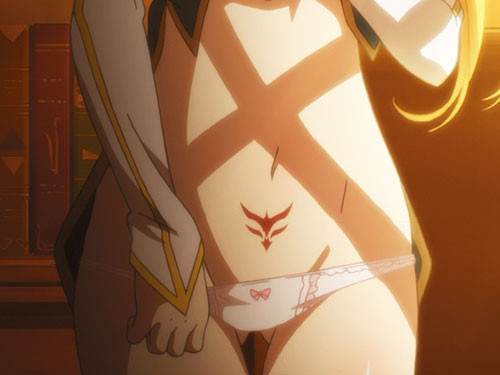 Lisesharte Atismata, リーズシャルテ・アティスマータ, example of womb tattoo as a magical crest.
Lisesharte Atismata, リーズシャルテ・アティスマータ, example of womb tattoo as a magical crest.
Character: Lisesharte Atismata, リーズシャルテ・アティスマータ Anime: Saijaku Muhai no Bahamut
Deciphering the “Womb Tattoo” Terminology
The English term “womb tattoo” might seem peculiar at first glance. After all, the womb, or uterus, is an internal organ, making it impossible to tattoo directly. The term doesn’t literally imply tattooing the womb itself, but rather the area of the lower abdomen, often associated with sensuality and fertility.
The connection to the “womb” arises from the visual and symbolic nature of these designs. Inmon are frequently depicted in pink or red hues and often shaped like hearts or crests. The heart shape, when stylized, can vaguely resemble a uterus, leading to the evocative term “womb tattoo.” This visual metaphor links the tattoo to themes of sexuality, love, and sometimes, even reproductive power within the fictional narratives.
Source: Misogohan みそごはん on Pixiv.
These designs vary widely, ranging from simple heart shapes to more elaborate patterns incorporating elements like stylized Fallopian tubes, ovaries, bat wings (referencing succubi), or lilies (yuri, symbolizing lesbian themes). This visual diversity allows creators to imbue the womb tattoo with specific meanings and associations relevant to the character and story.
The Effect of Womb Tattoos in Hentai and Anime
In hentai and anime, womb tattoos are not merely decorative. They often signify or amplify certain characteristics or abilities, particularly those related to sexuality and magic. The presence of a womb tattoo can have a range of effects on a character:
- Increased Lewdness (inran ni naru 淫乱になる): A primary function of the womb tattoo, especially in hentai, is to denote or induce a state of heightened sexuality or perversion in the character. It’s a visual shorthand for sexual availability or a predisposition towards lewd behavior.
- Inducing Heat (hatsujou saseru 発情させる): Womb tattoos can be depicted as having the power to put the wearer or those around them “in heat,” further emphasizing their sexual connotation.
- Corruption or “Evil Fall” (aku-ochi 悪堕ち): In some narratives, particularly those involving transformation or corruption, a womb tattoo can symbolize a character’s descent into villainy, often linked to succumbing to base desires or sexual temptation.
- Subjugation or “Female Fall” (mesu-ochi 雌堕ち): This effect, often seen in hentai, suggests a loss of agency or a surrender to a more “feminine” or submissive role, sometimes forced upon a character by the tattoo itself or its magic.
- Magical Contraception (hinin 避妊): Conversely, and less commonly in hentai, womb tattoos can sometimes have protective or beneficial effects. In some fantasy settings, they might act as magical contraception, preventing pregnancy through supernatural means.
It’s crucial to note that the specific effect of a womb tattoo is highly context-dependent, varying significantly across different works. While predominantly associated with sexual themes, especially in hentai, similar crest-like designs can appear in SFW (safe for work) anime and manga, potentially carrying different or diluted meanings.
Manga: Machikado Mazoku
Acquisition and Nature of the Inmon
Despite being called a “womb tattoo,” inmon are not necessarily applied like conventional tattoos. Given their often magical properties, their origin and method of acquisition are frequently supernatural:
- Magical Appearance: Inmon can simply manifest spontaneously due to magic or inherent magical abilities within a character.
- Curse: They might be bestowed as a curse, either causing the inmon to appear or the inmon itself acting as the curse, inflicting negative effects.
- Actual Tattoo: While less common in the context of magical inmon, they can sometimes be depicted as traditional tattoos, applied through conventional methods.
- Branding: In darker or more fantastical settings, inmon could be branded onto the skin using a hot iron, similar to branding livestock, signifying ownership or marking.
- Symbol: Inmon can also function as a symbolic mark, appearing in response to specific conditions or transformations, like a glowing symbol on a robot indicating a power surge.
Succubi and other demonic or monster girl characters in hentai are particularly prone to featuring womb tattoos. In these cases, the inmon often serves as a visual marker of their inherently lewd nature, reinforcing their identity as sexual beings.
Anime: Sono Bisque Doll wa Koi wo Suru
Location and Variations: Beyond the Lower Stomach
While the term “womb tattoo” suggests a placement on the lower stomach, inmon or similar lewd crests are not strictly confined to this area. They can appear in various locations on the body, as long as they maintain their suggestive or thematic function.
Another frequent placement is on the chest, particularly between or below the breasts, further emphasizing the sexual connotations. Even designs that are simply crest-like or belly tattoos, without explicit lewd effects, can be interpreted as inmon due to their visual similarity and central body placement.
 Aloe from Ishuzoku Reviewers, showcasing a womb tattoo placed on the chest area.
Aloe from Ishuzoku Reviewers, showcasing a womb tattoo placed on the chest area.
Character: Aloe Anime: Ishuzoku Reviewers
However, the definition can become quite broad. If function, acquisition, and location are loosely defined, almost any symmetrical mark on the body’s center could be dubbed an inmon. This broad interpretation raises questions about whether marks like eye pentagrams or tongue tattoos could also be considered inmon, pushing the boundaries of the term.
Character: Chaos Machina Anime: Shinchou Yuusha
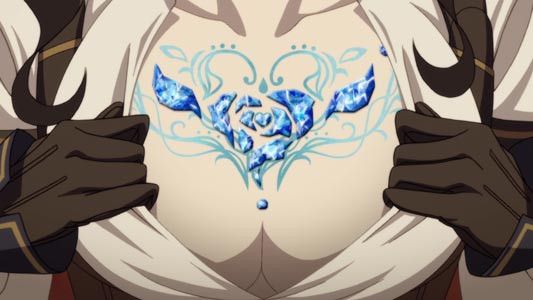 Cardia from Code:Realize, featuring a chest tattoo that could be interpreted as an inmon.
Cardia from Code:Realize, featuring a chest tattoo that could be interpreted as an inmon.
Character: Cardia Anime: Code:Realize
Character: Ciel Phantomhive Anime: Black Butler
Character: Brad Blackstone Anime: Taboo Tattoo
Tramp Stamps and Reverse Tramp Stamps: Related Terms
In English tattoo culture, the “tramp stamp,” a tattoo on a woman’s lower back, shares thematic similarities with the womb tattoo. Both are associated with sensuality and are often placed in erogenous zones. While a womb tattoo is typically on the front, a tramp stamp occupies the back.
Interestingly, the internet has also coined the term “reverse tramp stamp” to specifically describe tattoos on the lower stomach, essentially equating it to the “womb tattoo.” However, “womb tattoo” remains the more prevalent and recognized term for these front-facing lewd crests.
Character: Jean-Jacques Leroy Anime: Yuri!!! on Ice
In conclusion, the “womb tattoo,” or inmon, is a fascinating visual trope, particularly within hentai and anime culture. It represents more than just body art; it’s a symbol laden with meaning, often denoting sexuality, magical influence, and character traits within fictional narratives. While its definition can be flexible, its core association with lewdness and central body placement remains consistent, making it a recognizable and potent visual element.
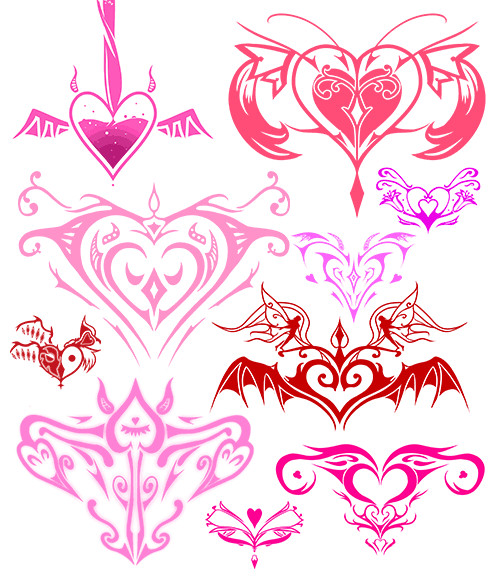 A variety of womb tattoo designs by Misogohan みそごはん on Pixiv, showcasing heart and uterus-like shapes.
A variety of womb tattoo designs by Misogohan みそごはん on Pixiv, showcasing heart and uterus-like shapes.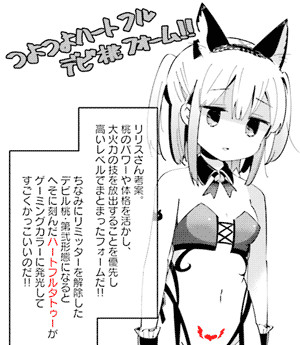 A demon girl with a heart-shaped womb tattoo in Machikado Mazoku, showcasing the symbol in a non-hentai context.
A demon girl with a heart-shaped womb tattoo in Machikado Mazoku, showcasing the symbol in a non-hentai context.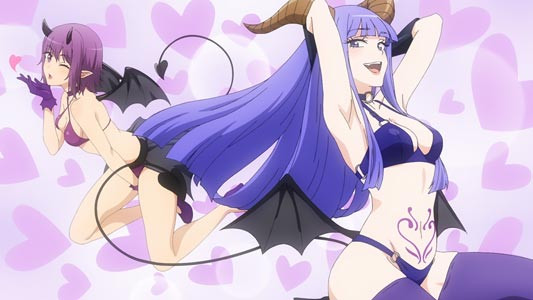 Two succubi illustrations, one prominently displaying a womb tattoo, highlighting its association with demonic sexuality.
Two succubi illustrations, one prominently displaying a womb tattoo, highlighting its association with demonic sexuality.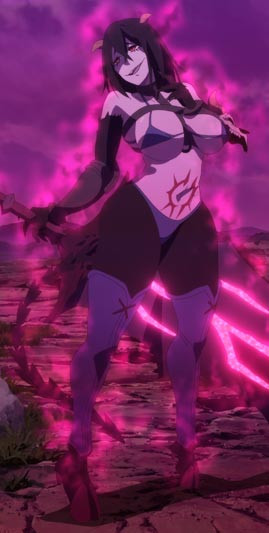 Chaos Machina from Shinchou Yuusha, demonstrating a crest-like belly tattoo that could be considered an inmon.
Chaos Machina from Shinchou Yuusha, demonstrating a crest-like belly tattoo that could be considered an inmon.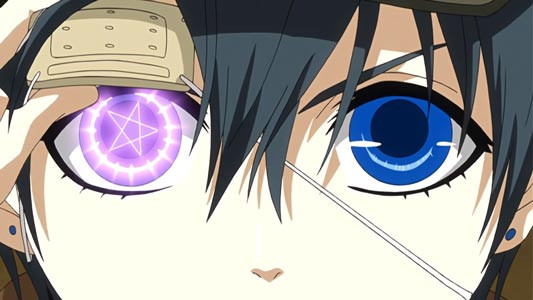 Ciel Phantomhive from Black Butler, showing an eye pentagram, questioning the limits of inmon definition.
Ciel Phantomhive from Black Butler, showing an eye pentagram, questioning the limits of inmon definition.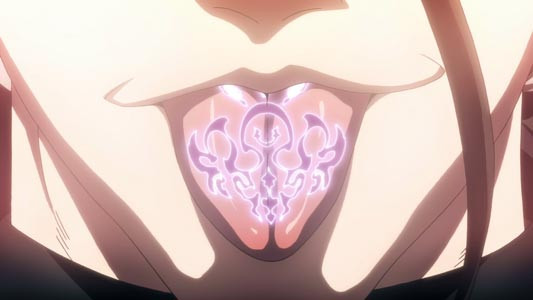 Brad Blackstone from Taboo Tattoo, displaying a tongue tattoo, further pushing the boundaries of inmon interpretation.
Brad Blackstone from Taboo Tattoo, displaying a tongue tattoo, further pushing the boundaries of inmon interpretation.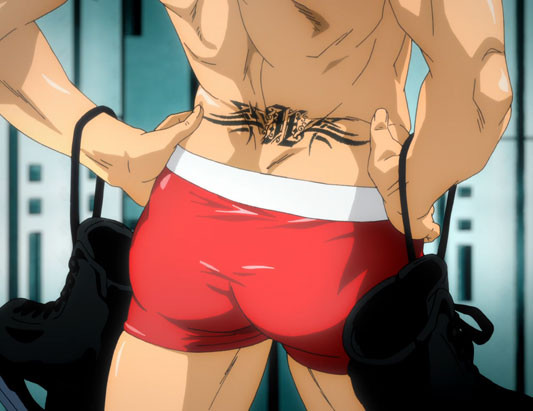 Jean-Jacques Leroy from Yuri!!! on Ice, showcasing a tramp stamp tattoo, a counterpart to the womb tattoo.
Jean-Jacques Leroy from Yuri!!! on Ice, showcasing a tramp stamp tattoo, a counterpart to the womb tattoo.